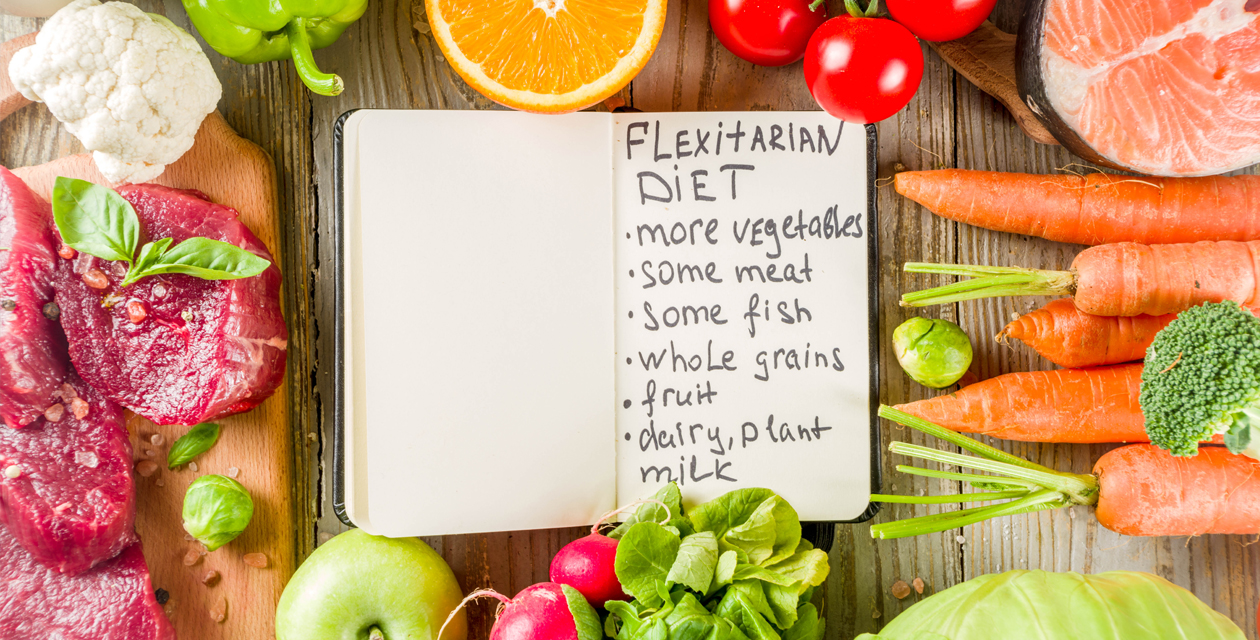
A flexitarian diet is more about choosing healthy options than adhering to a strict diet. This way of eating opens the doors for new and legacy brands to re-think how they cater to an audience that is open to a healthier lifestyle, on a more flexible route.
Many people find being a flexitarian appealing because it combines vegan, keto, clean, and vegetarian lifestyles into one easily adaptable plan. Flexitarians consume plant-based foods and eat meat on occasion—weekly, monthly, or during the holidays. Having the word “flexible” in its meaning also makes the lifestyle more palatable. The diet is easy to follow because there are no hard and fast rules. However, there are a few principles that define this relaxed way of eating:
- Eat mostly vegetables, fruits, legumes, and whole grains
- Focus on plant-based protein instead of animal-based protein
- Eat the most natural and least processed foods
- Include meat and animal products on occasion
- Limit added sugar and sweets
Being a flexitarian is not a fad. According to Mintel’s research, the proportion of meat eaters reducing or limiting the amount of meat they consume has risen from 28 percent in 2017 to 39 percent in 2019. Several factors are driving consumers to rethink how they eat. First and foremost, 66 percent of people identify as omnivores, meaning they still prefer meat. These consumers are incorporating meat-free, plant-based products into their diets because of the general health benefits, health of the planet, and animal welfare. The fact that a meaningful number of consumers are swapping out their meat intake for plant-based foods is an opportunity that food brands can’t afford to overlook in their brand strategy.
Feed the Demand
People are hungry for plant-based foods. The global organization Veganuary reported a staggering 1,200 new vegan products were introduced in January 2020. Among the brands offering new plant-based alternatives were Hellman’s and Ben & Jerry’s, and restaurants including KFC, Pizza Hut, and Subway. It cannot be denied that the rise of flexitarianism is fueling the number of meatless products hitting the grocery store shelves and restaurant menus. The Power of Meat report states that plant-based meat alternative sales increased 19.2 percent in 2019 and accounted for $878 million in annual sales.
Know Your Audience
A flexitarian diet is about eating more plants and not necessarily less meat. Many Americans don’t identify as vegans or vegetarians—the percentage of vegetarians was the same in 2018 as it was in 2012, according to Gallup polling. As of May 2019, one in five Americans identified as flexitarian. Around 13 percent of Gen Z and 10 percent of Gen X eat flexitarian diets, compared to just six percent of baby boomers. Meatless offerings appeal to the healthy and environmental aspirations of these consumers. When products are presented as the responsible thing to do, going meatless on occasion—such as Meatless Monday—can be extremely powerful for food brands.
Highlight Health Benefits
The use of packaging to draw consumer interest is equally important for plant-based foods as it is for marketing all other consumer goods. Terms like “gluten-free,” “sugar-free,” “superfood,” and other trending food labels are perceived as simple and added value.
Play Up the Taste & Indulgence
Health is the key driver of plant-based eating, but taste is important too. One of the biggest challenges in reaching consumers is simply getting their attention. Using the v-words, vegan and vegetarian implies that plant-based foods are less indulgent and flavorful than they actually are. Beyond Burger®, whose grocery store sales grew 135 percent by January 2020, plays up its taste and benefits on the packaging: “Every bite has that delicious taste and juiciness you crave with 20g of protein and marbling that melts and tenderizes as you cook. All without GMOs, soy or gluten.”
In addition to taste, consumers are looking for foods that are satisfying and indulgent. Examples include meat-free meatballs, mac and cheese, vegan pizza, and nut-milk coffee creamer. Using words like creamy, juicy, and flavorful emphasizes the taste and satisfaction of eating plant-based foods. “If a product is presented as delicious, it’s more likely someone will consider it on a shelf and take the time to read through health and sustainability claims,” says Erin Ransom, the Director of Marketing at Tofurky.
Draw Attention to Sustainability
Brands are calling attention to their sustainability efforts in consumer marketing because it’s good for mankind’s health and the health of the planet. For instance, brands could focus on recyclable packaging, zero-waste production, or the use of alternative energy in a manufacturing facility. Promoting sustainability is good for the planet and good business.
Consumer tastes are shifting to be more flexible and less rigid. Alliance’s data-driven insights and marketing strategy expertise can help your brand address the demand and drive results.

